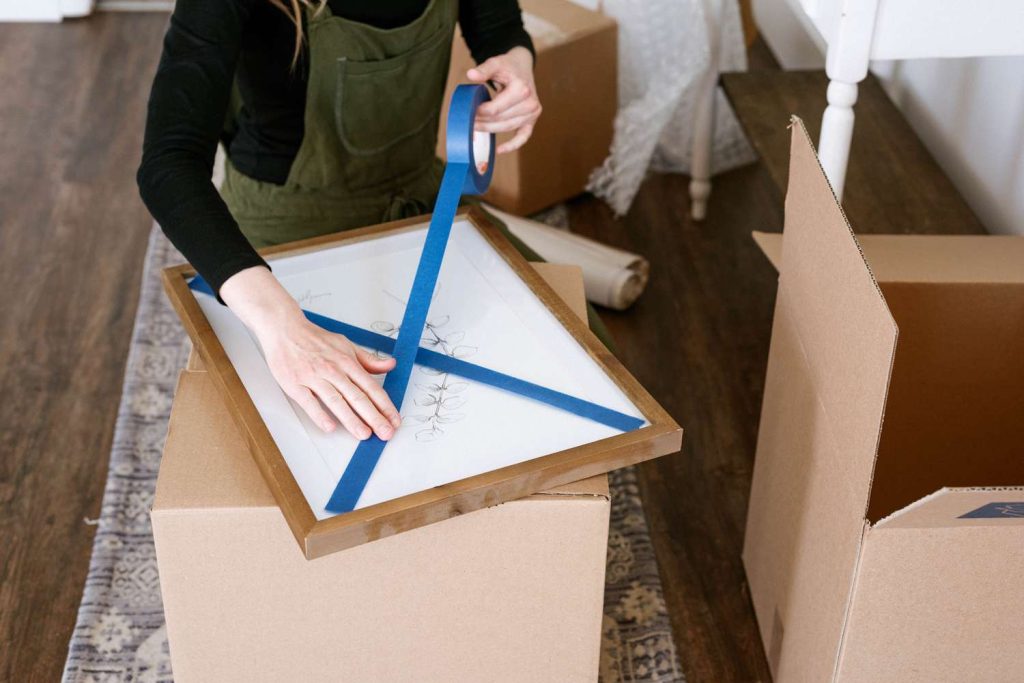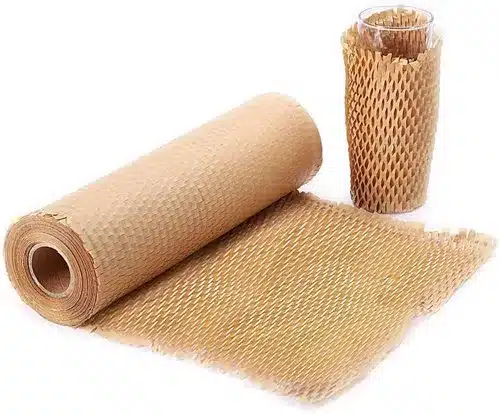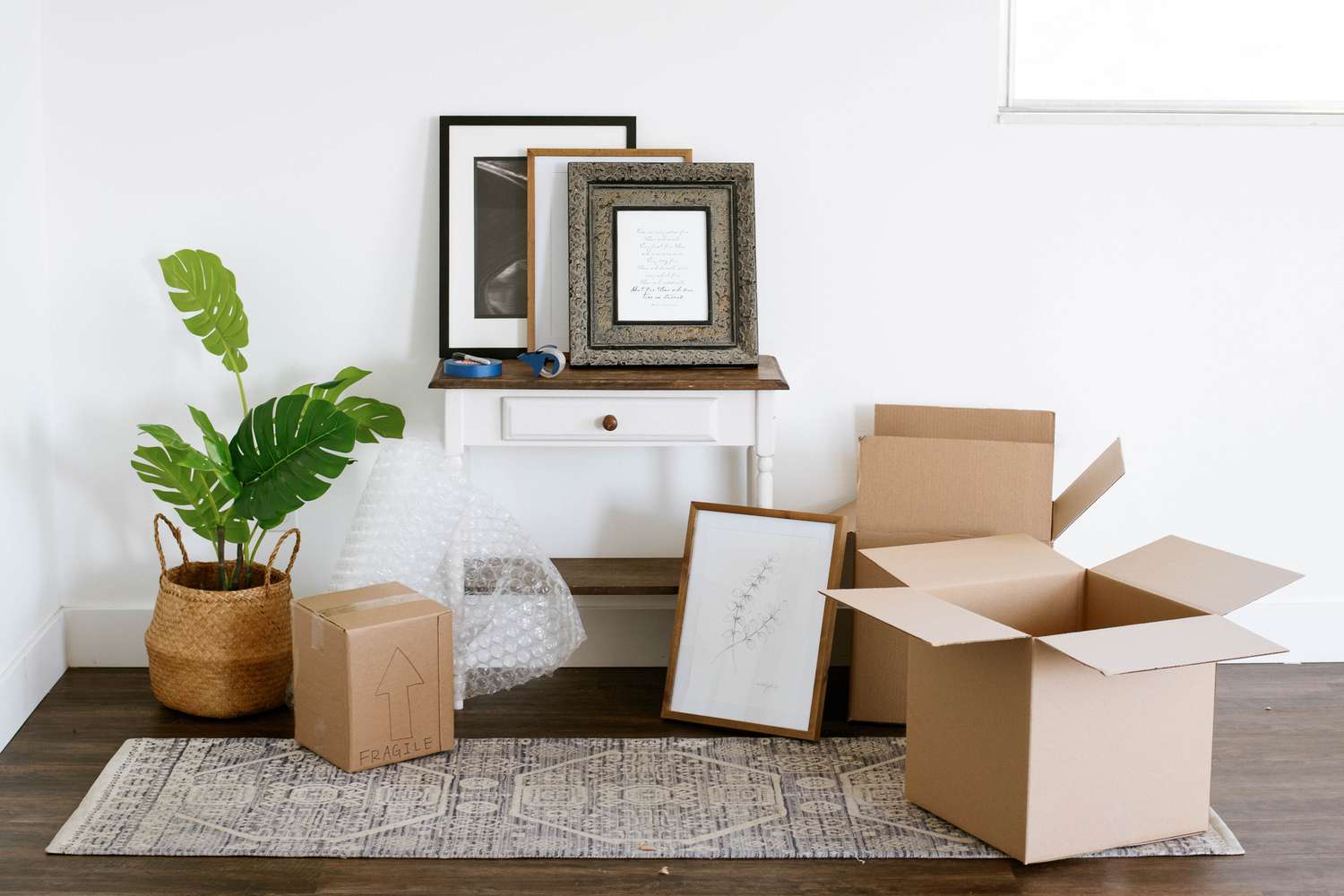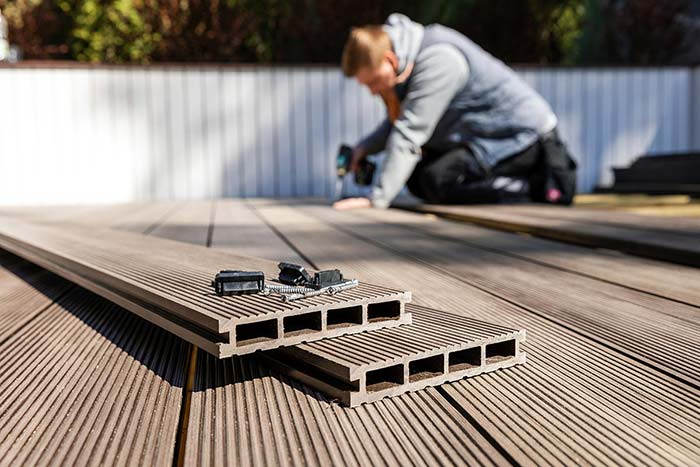Moving Artwork? Find Out How to Pack and Transport It Safely
Have you ever thought about how transporting famous pieces like the Mona Lisa or The Starry Night happens?
While it’s easy to imagine moving art collections, a lot of care is put into its handling and transportation, specifically when highly valued. In most instances, artworks are most vulnerable when transporting, especially when in the hands of an inexperienced mover.
As an artist or collector, understanding how to pack artwork for moving from point A to B is an important aspect of keeping the painting and frame intact.
For novice movers, let’s break down what supplies you need and how to pack, wrap, and transport your artwork most easily and safely.
Assess Your Artwork
Before buying any supplies you might need to package and protect your artwork for shipping, you first need to have complete knowledge of what you’re moving.
Different artworks—paintings in this case—require various handling tips depending on their type, fragility level, size, and age. This is where any professional moving company comes into play: better and safer handling.
For DIY purposes, here are a few things to observe while assessing it.
- Confirm what type of painting the artwork is: oil, acrylic, watercolor, prints or mixed media
- What material was used in creating the artwork: Canvas, wood, paper, metal?
- Check if the painting has a glass face or how fragile the frames holding it all together is
- How big is the artwork? Larger ones are often more challenging
- If the paintings are old, it’s require more care during handling as it’s susceptible to easy damage
- How far are you transporting the artwork? Longer distances require more durable packaging
- Find out what the temperature would be like on the day of transport. Humidity and temperature change can affect paintings.
Gathering Supplies
Remember, you value the artworks in your possession; otherwise, you won’t be reading this. It’s only reasonable if you have some handy tools and supplies to make packing paintings for moving readily available.
Here’s a list of the important things you will need to keep your paintings protected while moving.
- Boxes of different sizes
- Masking tape
- Wrapping materials: brown packing paper, bubble wrap, packing tape, acid-free paper, cardboard
- Markers
- Custom crates
- Fragile stickers (optional)
How to Pack Artwork for Moving: Steps
 It’s time to move! Let’s walk you through a step-by-step guide on how to pack artwork like professional fine art movers.
It’s time to move! Let’s walk you through a step-by-step guide on how to pack artwork like professional fine art movers.
Step #1: Figure out the right-sized boxes
When moving paintings, placing them inside carton boxes is always an excellent way to transport them. What’s more important is ensuring they fit well into the boxes prepared for them.
You don’t want to use overly big boxes; otherwise, the artwork could wiggle a lot inside the box during transit. Likewise, you don’t want smaller boxes, as they could damage the art due to compression.
Moreover, if you plan on moving more than a single piece, you might want to get multiple boxes for the different sizes. You can merge similarly sized art into a box; in some instances, small- and medium-sized ones can also go together.
Step #2: Make an “X” mark on the glass
 Strictly for artwork having a glass face!
Strictly for artwork having a glass face!
Using masking or painter’s tape, create an “X” shape over the glass face. Place the tape on one corner end of the glass and drag diagonally to the other end. Then, repeat for the other side until an “X” shape forms.
It’s an old trick that helps to keep the glass shards in place should it get shattered during transit. What it also does is reduce the risk of any glass shard damaging the painting on the inside.
Step #3: Cover the artwork’s face
When there’s no glass on the face, then cover the direct painting with a layer of plastic wrap to keep it safe.
However, if it’s an acrylic painting, regular plastic wrap can cause a reaction that can damage it. A better option is to use acid-free, brown, or parchment paper as a protective barrier.
Step #4: Protect the edges of the frame
Assuming your paintings have well-defined frames with four corner edges, you will need to ensure proper cushioning for them.
Knowing how to pack framed art for moving can help prevent it from being damaged. Place the cardboard corner protector pieces on each side to offer an extra layer of safety from impact damage.
Step #5: Cushion with bubble and paper wrap
 After putting the first layers of protection for the glass face, frame corners, and paintings, it’s time to cover the artwork with bubble and paper wraps.
After putting the first layers of protection for the glass face, frame corners, and paintings, it’s time to cover the artwork with bubble and paper wraps.
How to wrap pictures for moving?
First, place brown paper flat on a surface, twice the area size of the painting. Then, lay the artwork (glass or painting side) down against the paper and wrap all the ends around it just like you would do a gift.
Do this the same way with the bubble wrap. However, when covering the painting using this wrap, ensure the bubble parts are on the outside for the best cushioning.
Then, use your packing tape to cover the bubble wrap lengthwise and widthwise. This helps to keep the wrapping in place and stable during transit.
Step #6: Check for movements and Seal
At this point, you are done with the packaging and all the cushioning; the next step is to test if it wiggles around in the box you picked.
You need to place the artwork into the box (vertically, in a standing position) and close the lid. Then, give the box a bit of shake and listen to notice if there’s plenty of shifting going on.
If it wiggles around, add cushioning materials like bubble wrap or paper to the box for support. Once stable, you can seal the lids of the boxes and prep for transport.
Step #7: Indicate the box’s content and fragility
Using the markers you have, mark the boxes on the outside stating their contents. If you prefer to keep the content hidden, you can write “Fragile” boldly; that way, whoever is helping you move the box knows to handle it with care.
If you have “Fragile” or “This Side Up” stickers, you can stamp them on the outside of the boxes instead of using markers or just mix both. The choice is yours.
Tips for Handling Special Cases
 The requirements for safe transportation are slightly different for moving oversized, delicate, and high-value artworks. Here are some tips to help you move:
The requirements for safe transportation are slightly different for moving oversized, delicate, and high-value artworks. Here are some tips to help you move:
- Invest in custom crating for larger artworks
- Opt for climate-controlled transport means for artworks sensitive to temperature changes
- Avoid stacking multiple large frames together to prevent damages
- Request for extra hands or forklifts to move heavy artworks safely
- Have insurance coverage for each artwork to protect against damage.
- Consider hiring professionals to move this type of artwork
Final Words—Moving Artworks
Having artwork and planning a relocation of the piece is a big deal. Whether it’s high or low valued, knowing how to pack artwork for moving is essential in ensuring safe transportation.
The honest, best way is to hire experts to assist with handling the artwork. However, DIYing the entire process is also an option if you can follow the guidelines.
If you’re doing it yourself, follow the steps provided in this article, and you can expect a safe and well-cushioned transit of the piece.







